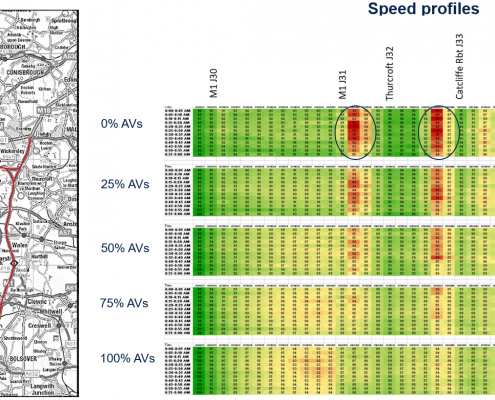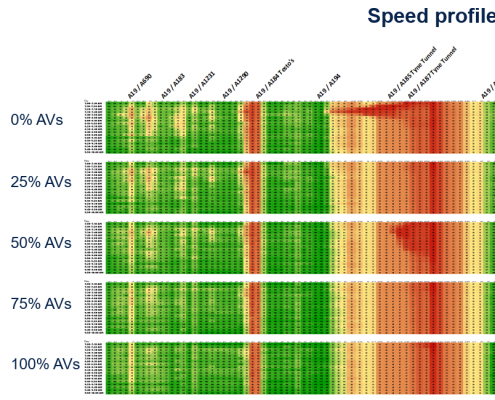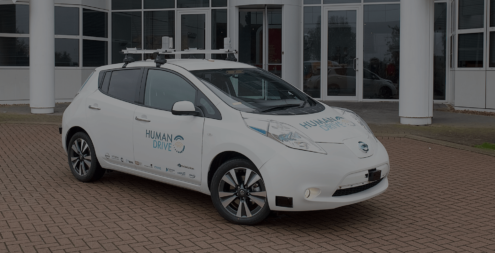![aimsun-300x3001-11[1]](https://humandrive.co.uk/wp-content/uploads/2018/11/aimsun-300x3001-111-300x102.png)
![aimsun-300x3001-11[1]](https://humandrive.co.uk/wp-content/uploads/2018/11/aimsun-300x3001-111-300x102.png)
Aimsun is a leading international provider of software and services for traffic planning, simulation and prediction. The company’s integrated Aimsun Next mobility modelling software provides an accurate and cost-effective simulation environment for testing connected and autonomous vehicles; it is the perfect tool for investigating the impacts of different CAV systems, including vehicle management and control strategies, as well as the impact of robustness issues such as information delays, data integrity, and black spots in connectivity and communications.
Aimsun has nine offices worldwide and over 5400 users, including government agencies, consultancies and research institutions, with the UK team leading the way in CAV R&D through involvement in InnovateUK projects.
Within HumanDrive, Aimsun is working with Highways England to investigate the effect of CAVs on the strategic road network via the implementation of a simple CAV control strategy within a new class of vehicles in an extensive simulated network. The two networks selected for testing represent a motorway (the M1 around Sheffield) and another a more complex A road configuration in the Sunderland area (A19), which contains roundabouts and signalised junctions. The microscopic impact of CAVs on differing groups of road users will be investigated in the peak period, and variables such as following headway and deceleration limits varied in order to see how the percentage and characteristics of the equipped vehicles affect capacity (speed, headway etc) and even emissions Key Performance Indicators (KPIs) of both the CAV, and non-CAV traffic; this provides a basic cost-benefit assessment for stakeholders to judge steps needed in planning for the appearance of CAVs on the road network. The model has been prepared during 2018, with simulations undertaken in 2019.
For more information visit www.aimsun.com
Traffic modelling reveals CAV potential
The theoretical benefits of connected and autonomous vehicles are well known: the total elimination of accidents, and a potential 900% increase in capacity by using platooning systems. However, the practical benefits when interaction with non-CAV traffic is taken into consideration are likely to be far fewer. Aimsun’s Mark Brackstone has written a blog describing how simulation has become invaluable for any kind of meaningful cost-benefit assessment.
Our Partners










NEWS AND SOCIAL
- Nissan Leaf completed the UK’s longest and most complex autonomous journey5th February, 2020
- HumanDrive project in countdown to Grand Drive4th September, 2019
A 30-month Autonomous Vehicle project led by Nissan’s European Technical Centre will soon complete its primary aim – achieving the UK’s most complex journey with autonomous drive. Before the end of 2019 the HumanDrive vehicle will self-navigate a 230-mile journey over country roads, high speed roundabouts, A-Roads and motorways, all through live traffic. In addition, the HumanDrive project will seek to take autonomous technology to the next level in terms of ride comfort and adaptability by adopting natural road positioning and a more human-like driving style. To achieve this grand aim, the project has drawn upon the expertise of a world-leading consortium: Nissan Technical Centre Europe (lead partner) is leading on the development and testing of the next generation autonomous vehicle that will soon complete the Grand Drive Hitachi is developing an advanced machine-learning Artificial Intelligence to control the vehicles perception and decision making University of Leeds is responsible for defining the user requirements and developing a driver risk model using trials data captured from their simulator and live trials Cranfield University is validating the technology through a digital model, and has supported the trials, demonstration and experimental validation, utilising its advanced Multi-User Environment for Autonomous Vehicle Innovation (MUEAVI) test track Atkins Ltd is ensuring that all cyber security precautions have been considered, including the publication of the Cyber Security Framework that provides assurance to the public that the security risks associated with CAV technology are being appropriately managed Highways England is exploring the impact of CAVs on the transport system Aimsun Ltd is supporting Highways England in the study of the impact on the transport system HORIBA MIRA is providing test facilities and helping to ensure the safety of other road users, as well as passengers and safety driver SBD Automotive is supporting the cyber security aspects of the project Connected Places Catapult is responsible for project management, dissemination and safety case elements of the project. Robert Bateman, HumanDrive Project Manager for Nissan Technical Centre Europe, said: “We are getting close to delivering on our main aim – a 230-mile Grand Drive across the UK, through live traffic and some very challenging road networks. Our consortium partners have given a tremendous push to get us to this point, and we’ve made some significant learnings along the way as we develop this human-like autonomous driving style.” Rav Babbra, Innovation Lead, Automotive Team, Innovate UK, said: “The UK is at the […]
- Advanced simulation tools supporting HumanDrive and wider CAV roll out2nd August, 2019
Software packages developed to deliver a highly accurate digital twin of the real world, and to merge and manage multiple simulation platforms Both simulation tools being used by HumanDrive project partners to achieve 230-mile autonomous journey later this year, and to support wider CAV roll out Visualisation experts at the Connected Places Catapult (CPC) have developed a unique and innovative simulation tool to support the HumanDrive project and wider Connected and Autonomous Vehicle (CAV) development, enabling project partners and developers to visualise trials data in a highly accurate digital twin of the real world. Built following a series of real-world and simulated trials carried out by project partners Cranfield University and the University of Leeds, the tool is helping the HumanDrive team to better understand how humans drive. Uniquely, it enables developers to interrogate and filter data – collected from real-world and simulation trials, human factor observations and monitoring of drivers, and on-board sensor equipment such as lidar – with a specific question in mind. Martin Pett, Principal Technologist at the CPC, said: “We needed to create a digital twin of the trial environment in a user-friendly format so that project partners can replay and filter reams of data for deeper analysis. For example, how the trial participant positioned themselves when they passed a cyclist, their acceleration or braking profiles, how they held the steering wheel, or how weather conditions affected their speed.” “The tool is built on the Unity platform – a cross-platform, real-time engine for simulation construction commonly used by game developers – and allows you to replay the entire trial virtually, whilst seeing all the data that was generated from multiple participants, all in one place and time synchronised. It really is a fantastic tool that can be used by individuals who may not have modelling experience.” Also developed by the CPC is a light-weight software infrastructure called ‘simulation to simulation’ (s2s) that helps integrate simulators and simulations. Simulation has the potential to allow CAV developers to explore thousands of design iterations in a rapid and cost-effective manner, adapting real-world scenarios as required (from changing weather conditions to manipulating physical environment and introducing hazards) with minimal input. s2s provides a means by which simulations may be joined together to support this goal. Ecaterina McCormick, Senior Technologist at the CPC, said: “This free piece of software – which is unique to the transport sector – allows users to […]
Terms & Conditions | Privacy Policy | Cookie Policy
© 2019 HumanDrive. All rights reserved.



